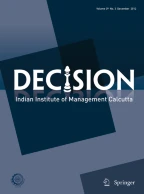222Accesses
1Citation
3 Altmetric
Abstract
This paper analyzes the nebulous concept of ‘crony capitalism’ and its association with anticompetitive regulatory practices. It argues that presence of such practices may be necessary for identification of crony capitalism but is not sufficient. In particular, we present a mathematical model where a rational, revenue-maximizing government finds itoptimal to allocate a monopoly license on the first-come, first-served basis, rather than by conducting an auction, when monopoly profits are not expected to be high in short term. Thus, mere allocation of property rights without competitive bidding cannot be classified as crony capitalism.
This is a preview of subscription content,log in via an institution to check access.
Access this article
Subscribe and save
- Starting from 10 chapters or articles per month
- Access and download chapters and articles from more than 300k books and 2,500 journals
- Cancel anytime
Buy Now
Price includes VAT (Japan)
Instant access to the full article PDF.
Similar content being viewed by others
Explore related subjects
Discover the latest articles, books and news in related subjects, suggested using machine learning.Notes
See Kang (2003) and webpagehttps://en.wikipedia.org/wiki/Crony_capitalism.
Of course, Raja tweaked the FCFS rule to reward the first entity to applyas well as comply with specific bureaucratic formalities that he decided on his own (seehttps://www.ndtv.com/india-news/how-raja-misused-pms-letter-while-allocating-2g-licences-468877).
A second-price auction is an auction where: (1) the highest bidder wins, (2) each agent presents a sealed bid (that is unknown to other bidders), and (3) the winner pays the second highest bid as price to the auctioneer (in this case, government). Similar auction schemes have been used to allocate licenses to buy cars in Singapore, in an attempt to control traffic congestions (see Koh2004).
Note that this result is quite general in the sense that it does not depend on the exact values of reserve prices employed in each of the allocation schemes.
References
https://en.wikipedia.org/wiki/Crony_capitalism. Accessed 26 Sept 2018
https://www.ndtv.com/india-news/how-raja-misused-pms-letter-while-allocating-2g-licences-468877. Accessed 26 Sept 2018
Haber S (2013) Crony capitalism and economic growth in Latin America: theory and evidence. Hoover Institution Press, Stanford
Kang DC (2003) Transaction costs and crony capitalism in east Asia. Comp Politics 35:439–458
Koh W (2004) Congestion control and vehicle ownership restriction: the choice of an optimal quota policy. J Transp Econ Policy (JTEP) 38(3):371–402
Singh A, Zammit A (2006) Corporate governance, crony capitalism and economic crises: should the us business model replace the asian way of doing business? Corpor Gov Int Rev 14(4):220–233
Wei S (2001) Domestic crony capitalism and international fickle capital: is there a connection? Int Finance 4(1):15–45
Author information
Authors and Affiliations
Economics Group, Indian Institute of Management Calcutta, Kolkata, India
Conan Mukherjee
- Conan Mukherjee
Search author on:PubMed Google Scholar
Corresponding author
Correspondence toConan Mukherjee.
Additional information
Publisher's Note
Springer Nature remains neutral with regard to jurisdictional claims in published maps and institutional affiliations.
Rights and permissions
About this article
Cite this article
Mukherjee, C. On crony capitalism.Decision46, 35–39 (2019). https://doi.org/10.1007/s40622-019-00202-z
Published:
Version of record:
Issue date:
Share this article
Anyone you share the following link with will be able to read this content:
Sorry, a shareable link is not currently available for this article.
Provided by the Springer Nature SharedIt content-sharing initiative
Keywords
JEL Classification
Profiles
- Conan MukherjeeView author profile

